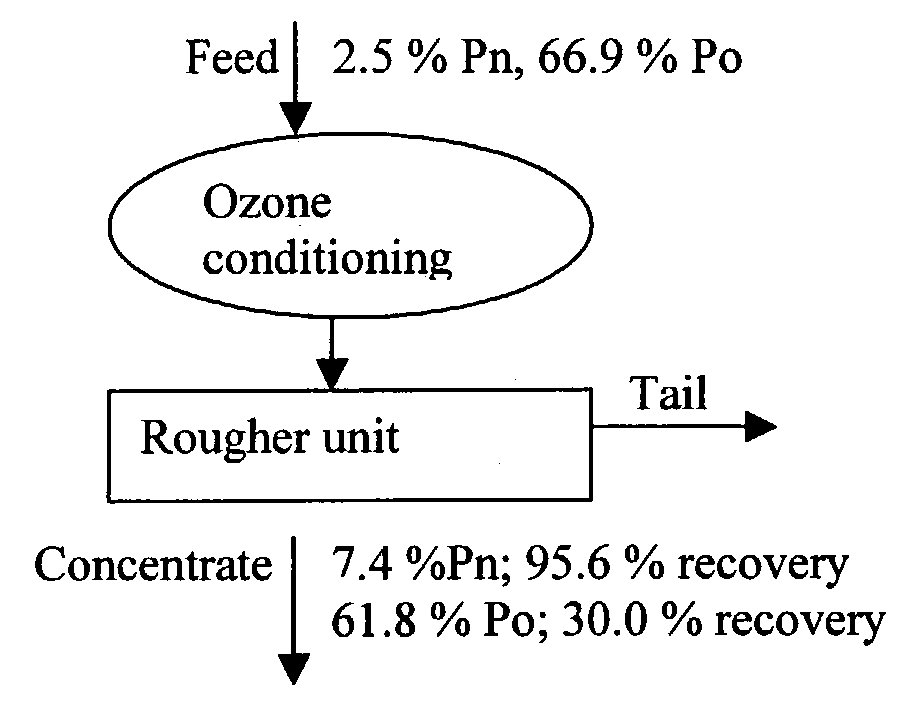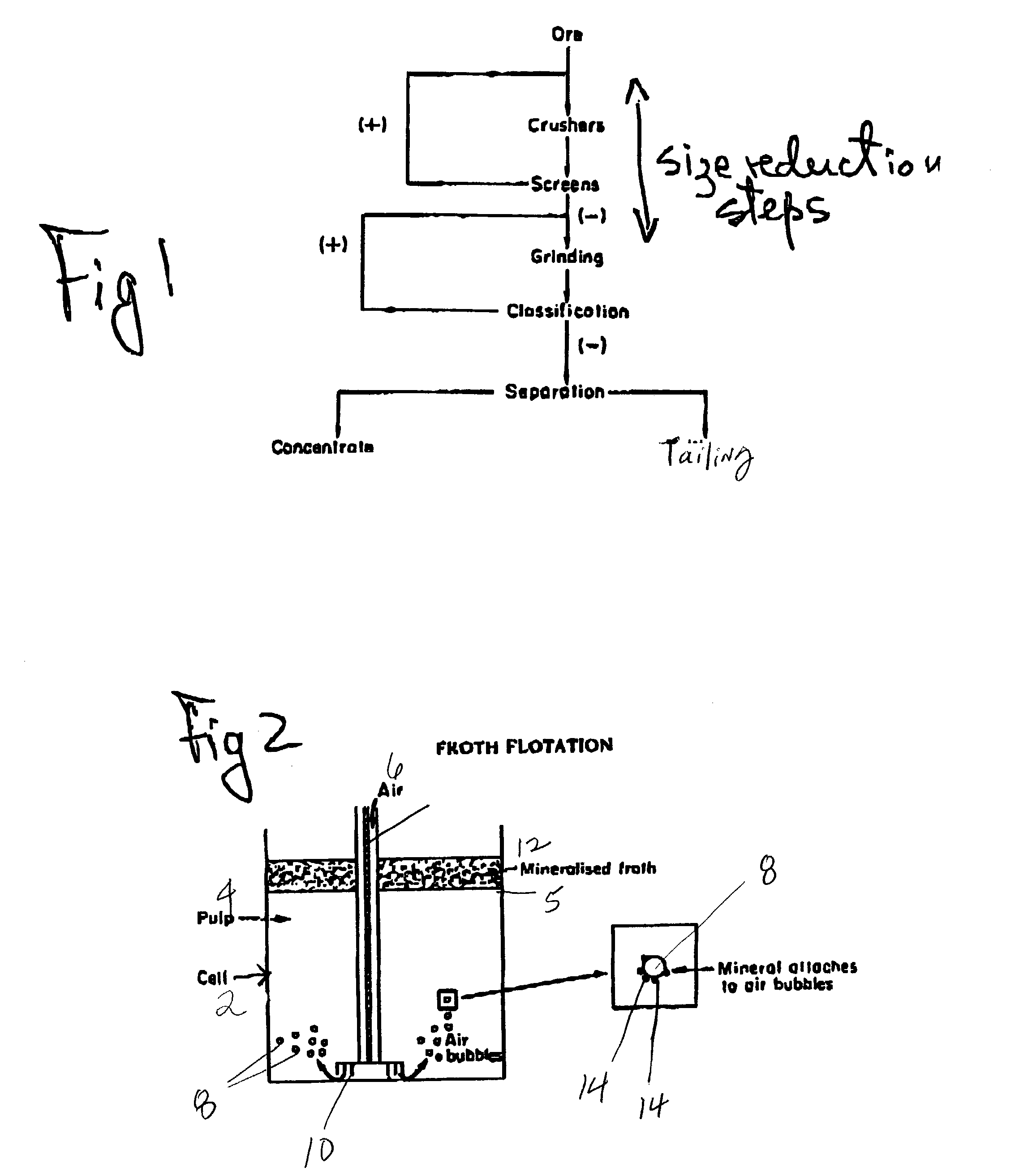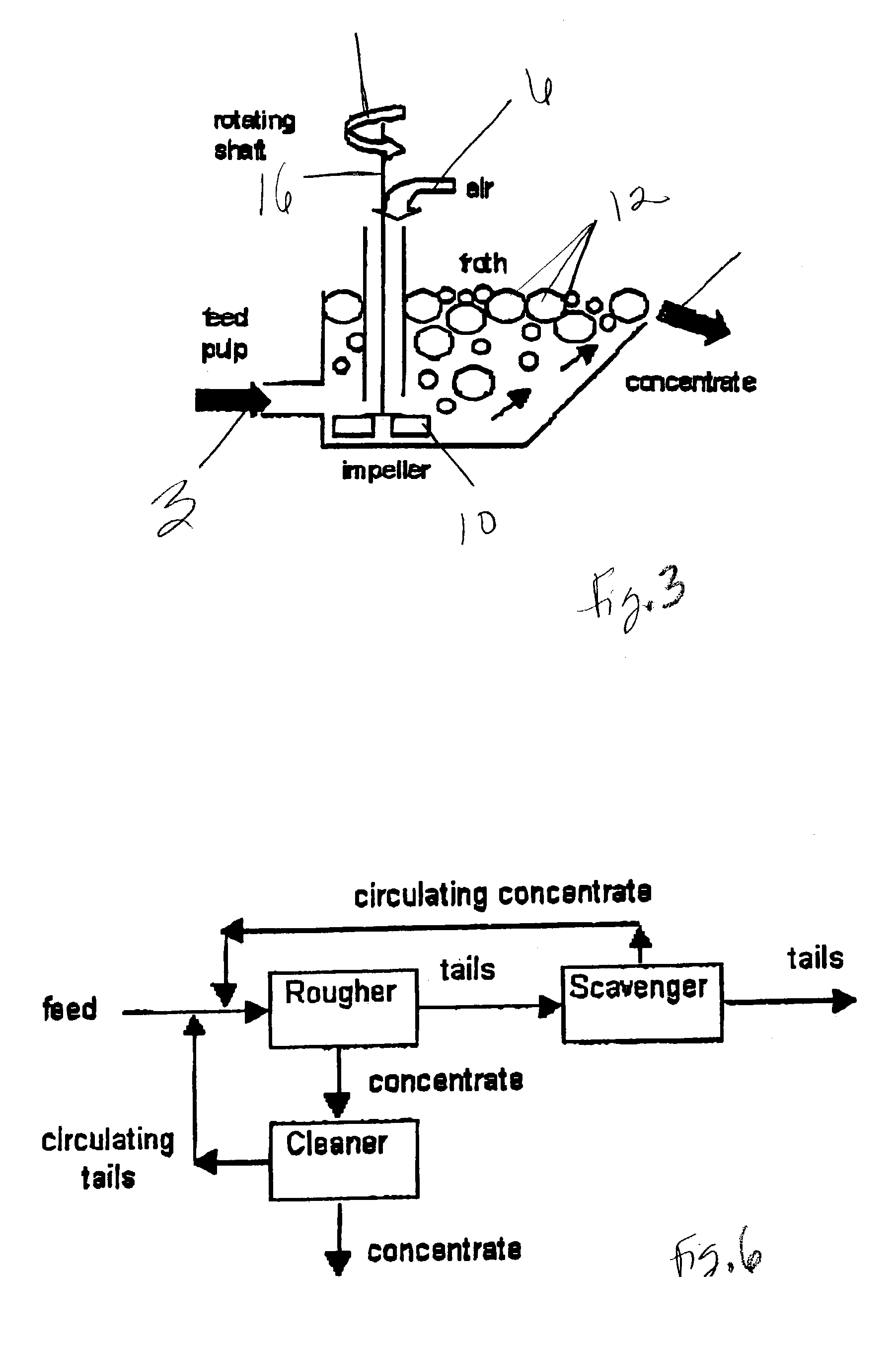Use of ozone to increase the flotation efficiency of sulfide minerals
a technology of sulfide minerals and ozone, which is applied in the direction of flotation, solid separation, inorganic chemistry, etc., can solve the problems of low cost of iron treatment, low cost of heat and/or sulfur dioxide needed to deactivate sphalerite, and general unattractive process environmental
- Summary
- Abstract
- Description
- Claims
- Application Information
AI Technical Summary
Problems solved by technology
Method used
Image
Examples
examples
Copper Separation
[0066]In copper circuits, low grades are often the result of iron sulfide gangue minerals mixing into to the concentrate. The effect of ozone gas conditioning was estimated using a sample with 2% chalcopyrite, 19% pyrite, 61% pyrrhotite and the balance were non-sulfide gangue minerals. The pH was chosen at 8.5 rather than high pH, such as pH 11, in order to avoid the preferential formation of surface oxidation products on pyrite and pyrrhotite rather than on chalcopyrite due to the increase in pH. The copper and iron recovery for a baseline test were 85% and 28%, respectively. When ozone was used in the range of 2 to 4 kg O3 / ton feed material, the recovery of copper increased to 90% and iron recovery decreased to 25%. Since the difference in copper recovery is relatively higher than iron, the oxidant not only affected the surface particles but also the state of the collectors, which increased the flotation rate constant of copper. It appears that the electrochemical...
PUM
| Property | Measurement | Unit |
|---|---|---|
| pH | aaaaa | aaaaa |
| mean particle size | aaaaa | aaaaa |
| particle size | aaaaa | aaaaa |
Abstract
Description
Claims
Application Information
 Login to View More
Login to View More - R&D
- Intellectual Property
- Life Sciences
- Materials
- Tech Scout
- Unparalleled Data Quality
- Higher Quality Content
- 60% Fewer Hallucinations
Browse by: Latest US Patents, China's latest patents, Technical Efficacy Thesaurus, Application Domain, Technology Topic, Popular Technical Reports.
© 2025 PatSnap. All rights reserved.Legal|Privacy policy|Modern Slavery Act Transparency Statement|Sitemap|About US| Contact US: help@patsnap.com



